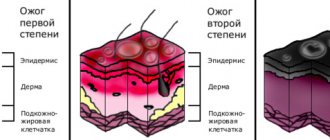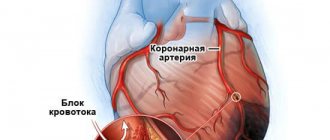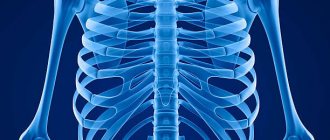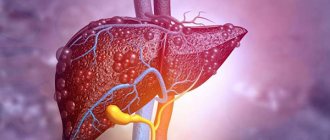Dermatovenerologist
Khasanova
Alina Rashidovna
8 years of experience
Make an appointment
Redness of the skin in a certain area of the body, caused by the expansion of the vascular network and increased blood flow into these vessels, is called erythema. Unlike the manifestations of hemorrhage, when pressing on the affected area of the skin, the redness disappears. Skin reactions are caused by various factors - adverse external influences, inflammatory processes, pathological changes. Red spots appearing on the skin may have clear or blurred boundaries, accompanied by swelling, peeling, itching, etc.
Types of pathology
Erythema is classified according to the type of vessels affected:
- active - occurring with a sharp expansion of the lumen of arterial vessels, accompanied by an acute inflammatory process, with bright redness of the skin, increased temperature, swelling and soreness of the skin;
- passive - formed when blood stagnates in the venous vessels during their expansion, accompanied by the appearance of bluish-red or burgundy spots, mainly accompanying inflammation with a chronic course.
Each variety is caused by different causative factors and requires a separate therapeutic approach.
Based on etiology, the following types of erythema are distinguished:
- non-infectious - which are the physiological reaction of the body to external or internal irritants (solar ultraviolet radiation, critically high or low temperature, allergens, etc.);
- infectious - caused by the penetration of infection into the skin capillaries through the surface of the epidermis, from the systemic bloodstream or through the mucous membrane.
Non-infectious manifestations usually do not require special treatment, as they go away on their own after the action of the provoking factor ceases. Infectious reactions are expressed in an inflammatory process that occurs in an acute or chronic form and is accompanied by certain symptoms.
Causes of hyperemia of the conjunctiva of the eye
Often redness of the eye
- This is a sign of conjunctivitis (inflammation of the conjunctiva). But it is important to remember that hyperemia can be caused by other reasons, and can also be a symptom of complex pathologies that lead to complete or partial blindness. Therefore, it is worth entrusting the diagnosis to experienced ophthalmologists.
The main causes of conjunctival hyperemia:
- All kinds of diseases of the organs of vision - barley, blepharitis, iritis, chalazion of the eyelid and others
- Allergy
- Mechanical damage and injury
- Diseases of the heart and vascular system
- Diabetes mellitus and other endocrine diseases
- Pathologies of cerebral vessels
- External factors - chronic fatigue, stress, increased visual stress, lack of sleep, radioactive radiation, etc.
Non-infectious manifestations
In accordance with the causes that caused them, erythema of non-infectious etiology is divided into:
- infrared - provoked by infrared radiation, the power of which was not enough for a full burn, and manifested in the form of a reddish vascular network;
- X-ray – caused by exposure to X-rays or high-frequency electromagnetic waves;
- symptomatic - appearing after contact with an allergenic agent in the form of hyperemic convex spots of irregular shape;
- idiopathic - formed under the influence of heredity as an increase in the diameter of capillaries at the junction with the vascular network, with redness of the palmar surfaces;
- cold - formed when the skin is exposed to low temperatures, manifesting itself in the form of a bluish-reddish rash with local swelling and itching;
- ultraviolet - appearing as a result of exposure to ultraviolet radiation on the skin.
In most cases, when the action of the provoking factor ceases, the redness disappears after some time. In some cases, symptomatic help is required.
Facial hyperemia
Facial hyperemia can occur as a result of a complex of vascular problems. A similar situation occurs with high blood flow speed and increased pressure. In addition, a small difference in the oxygen content between arterial and venous blood forces the heart and lungs to work harder, which provokes redness.
After a walk in the frosty air, hyperemia also occurs. It is caused by a sharp narrowing of the thin capillaries of the facial skin in response to low temperatures, which is replaced by a sharp increase in blood flow. This is how the body understands that there are areas of the body that are not protected by clothing, which need to be ensured vitality by being warmed by the bloodstream.
But there is also other redness caused by an allergic reaction to frost. This is the body's pathological response to cold. Such redness does not go away for a long time, even after returning to a warm room. This reaction indicates a decrease in immunity and the body’s inability to protect itself from adverse external factors.
Allergic facial hyperemia can be distinguished from physiological hyperemia by several signs. For allergies:
- redness occurs on all open areas of the body;
- hyperemia may take the form of urticaria;
- skin itching appears;
- the mucous membrane swells;
- there is a flow from the nose or tear duct;
- headache appears.
The temperature rarely rises during an allergic reaction.
Infectious pathologies
Various pathogens can provoke the development of infectious inflammation of the skin - bacteria, fungi, viruses or parasites. This form is characterized by an acute course, which can turn into a chronic form. The patient needs immediate medical attention.
In its acute form, the most common erythema infectiosum in children is caused by parvovirus B19. It is characterized by the sudden onset of the disease, the characteristic signs of which are:
- rapidly rising body temperature;
- muscle pain, headache;
- the appearance of a red rash covering the face and body on the third or fourth day after the onset of the disease;
- gradual increase and closure of spots.
After some time, clinical manifestations gradually fade away until they disappear completely. If left untreated, the process can become chronic. The patient remains able to transmit the infection to healthy people for several days after recovery.
Forms of hyperemia
Skin hyperemia is a consequence of internal changes in the body, which can be expressed in several forms.
| Name of the form of hyperemia | Characteristic |
| Local | This form of skin lesion is also known as erythema. It is characterized by redness of a small area of the skin of one part of the body, most often the face, upper or lower extremities. Crimson spots with local hyperemia can be identified by their property of merging with the shade of healthy skin when pressed. |
| General | General hyperemia involves a change in the tone of the entire body, usually due to a sudden change in pressure or prolonged physical activity. With this manifestation, drug treatment is not required. Redness usually occurs on its own after the body adapts to the environment. |
| Spilled | Diffuse redness of the skin is usually triggered by physical activity or a progressive inflammatory disease within the body. It usually appears in the breast area in women with lactostasis or a malignant breast tumor. |
| Demarcated | Limited manifestations of hyperemia are spots on the body of various sizes with clear boundaries. They usually occur due to the presence of infectious diseases, tuberculosis, and various liver lesions. |
Understanding which form of hyperemia is accompanied by a specific disease helps doctors quickly determine the cause of redness of the skin and eliminate it as soon as possible to avoid complications.
Nodular pathologists
The causative agent of erythema nodosum is usually streptococcus, and less often - some other infections. It often occurs against the background of tonsillitis, scarlet fever, and tuberculosis. You can recognize it by the following signs:
- rashes of bright red color, with bulges forming in the subcutaneous layer;
- asymmetrically located spots;
- gradual bluing of the spots, then yellowing, similar to the resorption of bruises;
- presence of fever;
- painful sensations and itching in the affected areas of the skin;
- the presence of multiple seals on the legs.
The patient is prescribed a course of antibiotics, antihistamines, as well as external treatment with antiseptics.
Skin hyperemia - what is it?
Skin hyperemia (this is a condition by the presence of which one can understand whether there are deviations in the health of a particular person) occurs in people of all ages. Its occurrence may be due to a large number of secondary circumstances.
Hyperemia manifests itself in two ways:
- The skin of a separate part of the body is covered with red (most often burgundy) spots of various sizes. In the vast majority of cases, such redness does not cause discomfort, and with proper treatment, the causes of their formation go away on their own.
- Selected areas of the skin uniformly acquire a reddish tint. As in the first case, after eliminating the circumstances that caused the blood vessels to overflow, the redness goes away.
To understand whether a change in skin color is really a sign of hyperemia, the patient should evaluate the affected area.
In this case, pay attention to the presence of:
- differences in skin temperature;
- painful or simply uncomfortable sensations when pressed;
- swelling;
- constant tingling.
If these symptoms are detected, a person should consult a doctor to identify the root cause of hyperemia.
Multiform exudative pathologies
The etiology is still not fully understood. The cause is believed to be an infection present in the body. The disease is usually chronic, with constant relapses. Symptoms of erythema multiforme exudative type are:
- slight increase in temperature;
- pain in muscles and joints;
- rashes with a central papule and clear boundaries of spots, located mainly on the bends of the limbs;
- uneven color of spots;
- symmetrical location of rashes on the body;
- tendency to grow with the formation of “garlands”;
- slight deterioration in general health.
The main difficulty is diagnosis, since the signs partially correspond to a number of other diseases. Before prescribing a course of therapy, differential diagnosis is carried out. Medicines are selected taking into account the age characteristics of the patient.
Types of hyperemia
Hyperemia is primarily considered as a pathology of the circulatory system. There are two types of pathological hyperemia:
- arterial;
- venous.
Arterial is called excessive blood supply to an organ when the arteries supply large volumes of blood that the venous system does not have time to remove. Arterial hyperemia can be physiological when more blood begins to flow to the organ during increased load. And venous is called hyperemia, which occurs during normal blood supply, which the venous system cannot drain due to the resulting pathology. For example, with blockage, thrombosis, or atherosclerosis, the lumen of the vascular bed is significantly reduced, and the passage of blood flow is significantly hampered.
The cause of venous hyperemia may be low blood rheology. When it is thick, it is difficult for the heart to pump it throughout the body system. In such a situation, you need to undergo an examination to confirm the problem, and in case of really thick blood, the doctor will prescribe treatment. Most often, it is enough to buy a drug that thins the blood and reduces the risk of blood clots.
The neurotonic type of hyperemia is said to occur when the tone of the nerve conductors increases under the influence of certain factors. First of all, this is facilitated by emotional activity. The second factor that increases the tone of nerve fibers is infectious diseases affecting the nervous system.
Along with an increase in the conductivity of nerve fibers, there is also a reverse reaction - a decrease in tone. As a rule, this is a temporary phenomenon caused by many reasons, such as tissue compression, swelling, hypothermia. As soon as the obstacle to the passage of arterial blood is removed, the tissues are filled with biological fluid with increased intensity, which causes the effect of hyperemia.
Migratory type pathology
Infectious dermatosis in the form of migratory erythema after a tick bite initially looks like a slight redness, which quickly increases in size and becomes ring-shaped with a clear hyperpigmented border. Unpleasant sensations, itching or burning may occur in the affected area. The stain persists for several days, in some patients up to a month. If left untreated, the disease becomes chronic, which is difficult to treat.
The disease is caused by the bacterium Borrelia, which is carried by ticks. The pathogen spreads in the body through the lymphatic and circulatory systems, penetrates various organs and other areas of the skin. The joints, muscles, and nerve tissues are most often affected, and less commonly, the tissues of the heart muscle and the lining of the brain.
Are you experiencing symptoms of erythema?
Only a doctor can accurately diagnose the disease. Don't delay your consultation - call
Hyperemia is
The definition of Hyperemia comes from the merger of two Greek words, where “hyper” means too much, and “haima” means blood. When blood accumulates in some part of the body or near some organ, we speak of hyperemia. Externally, it manifests itself as redness of the problem area, and sometimes the body temperature may rise locally. Sometimes a rush of blood causes tissue swelling.
There are several reasons that cause hyperemia. First of all, possible pathologies of the blood supply are identified: the inflow and outflow of blood in a specific area. If there are no problems in the circulatory system, then other possible causes are determined, including:
- temperature changes;
- stress;
- hormonal disorders;
- allergic reactions;
- infectious lesion;
- burn.
It is necessary to eliminate hyperemia from the diagnosis, since it is not a disease in itself, but is considered by medicine exclusively as a symptom.











